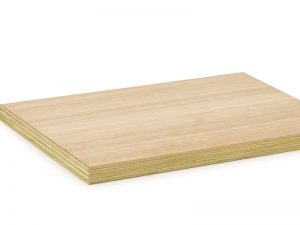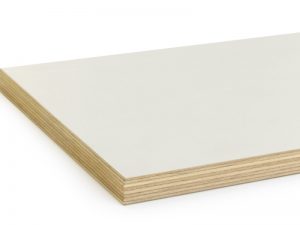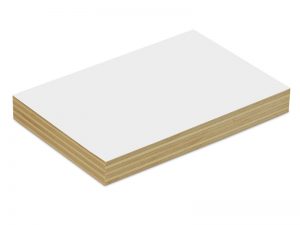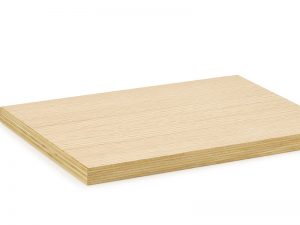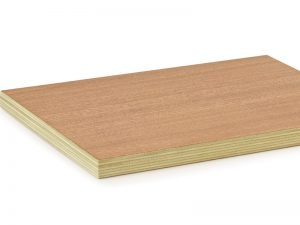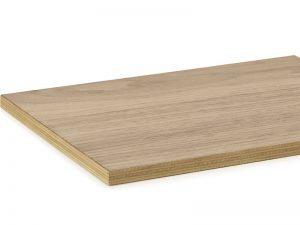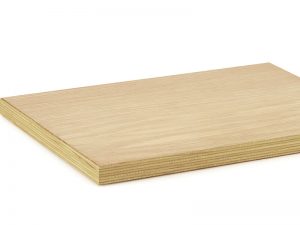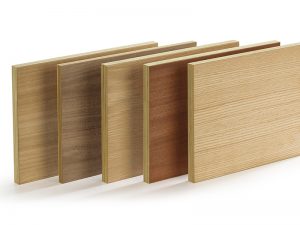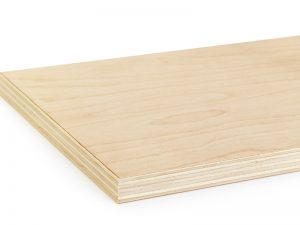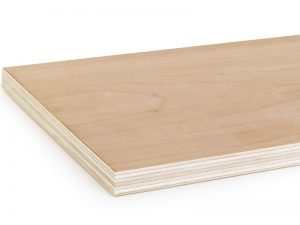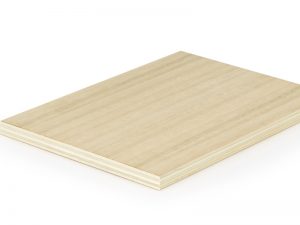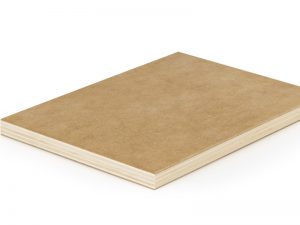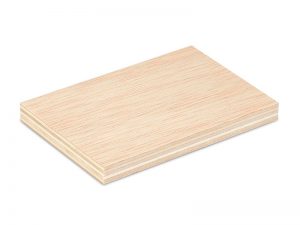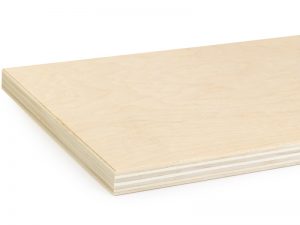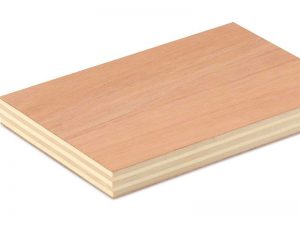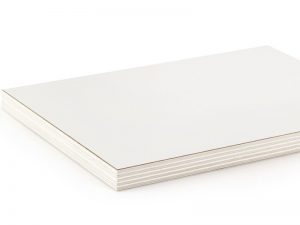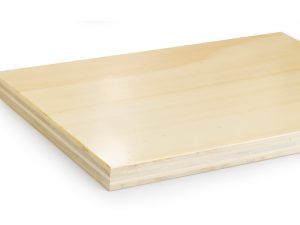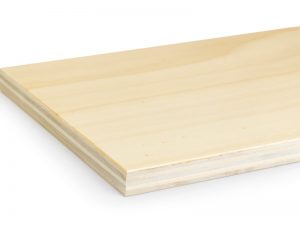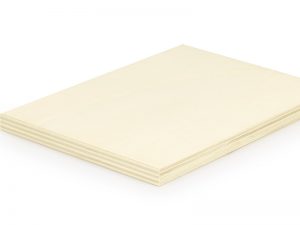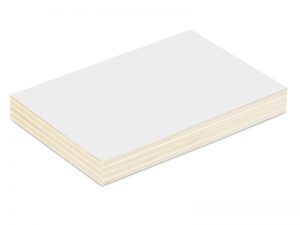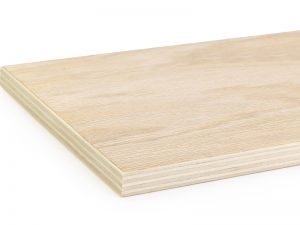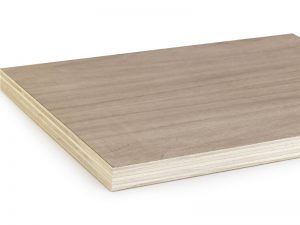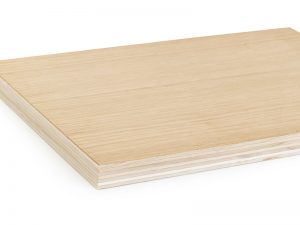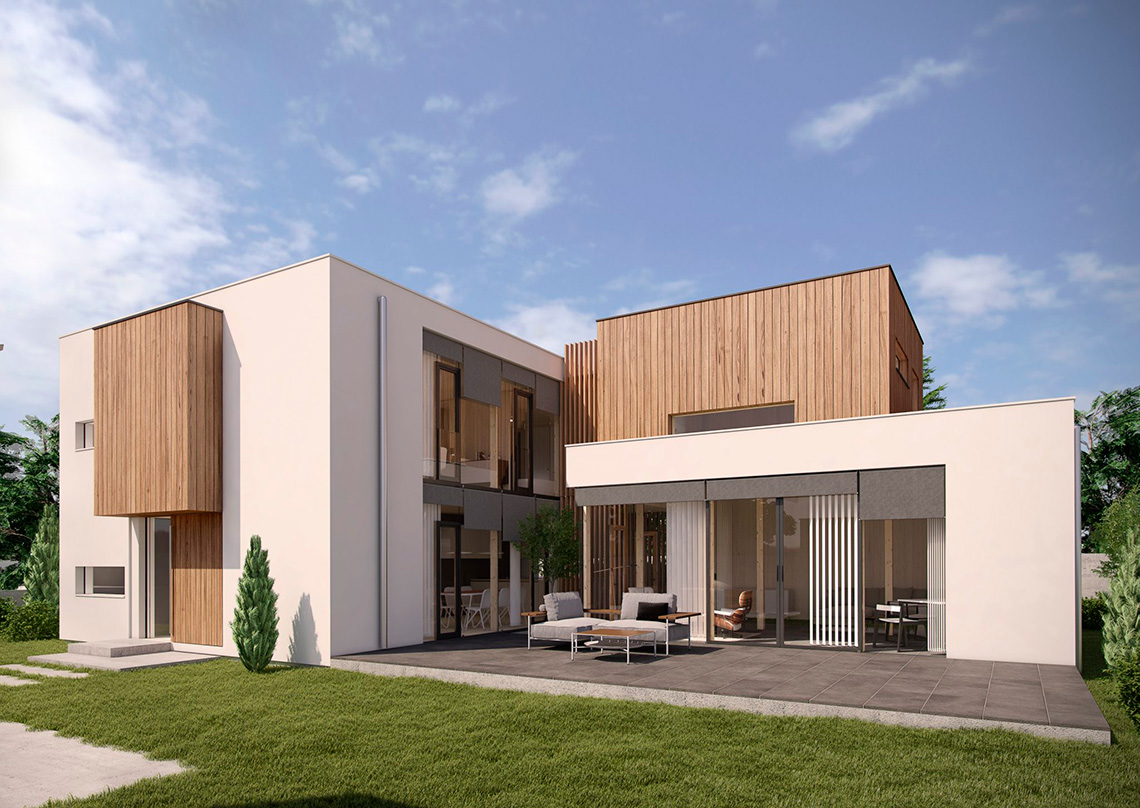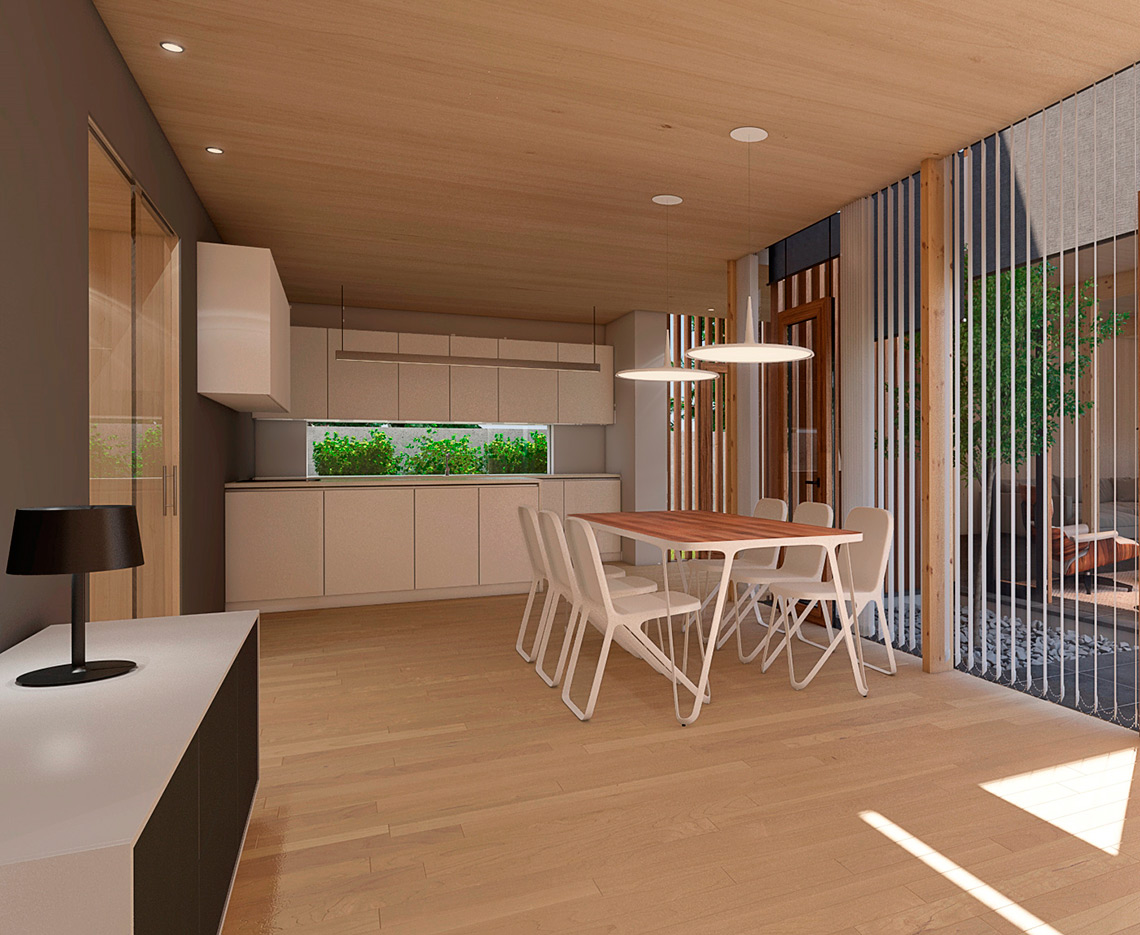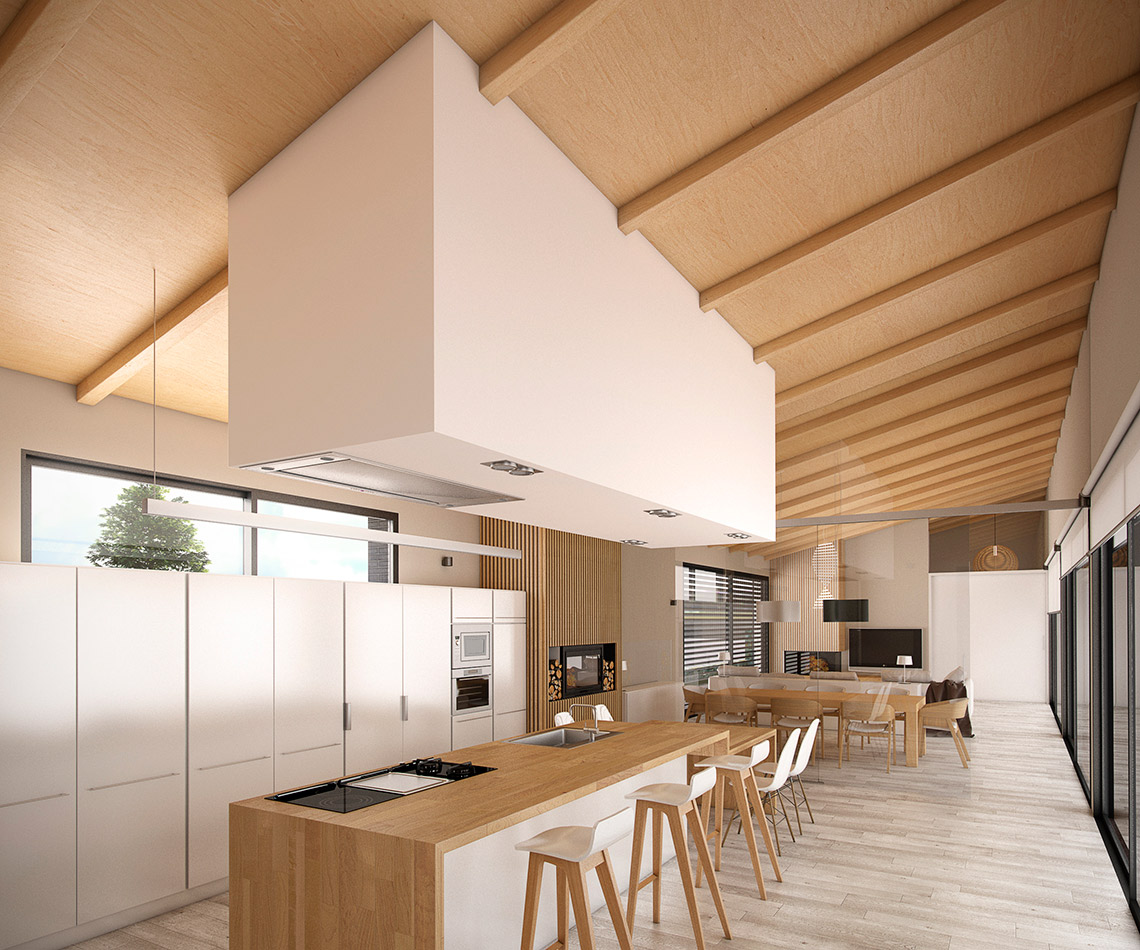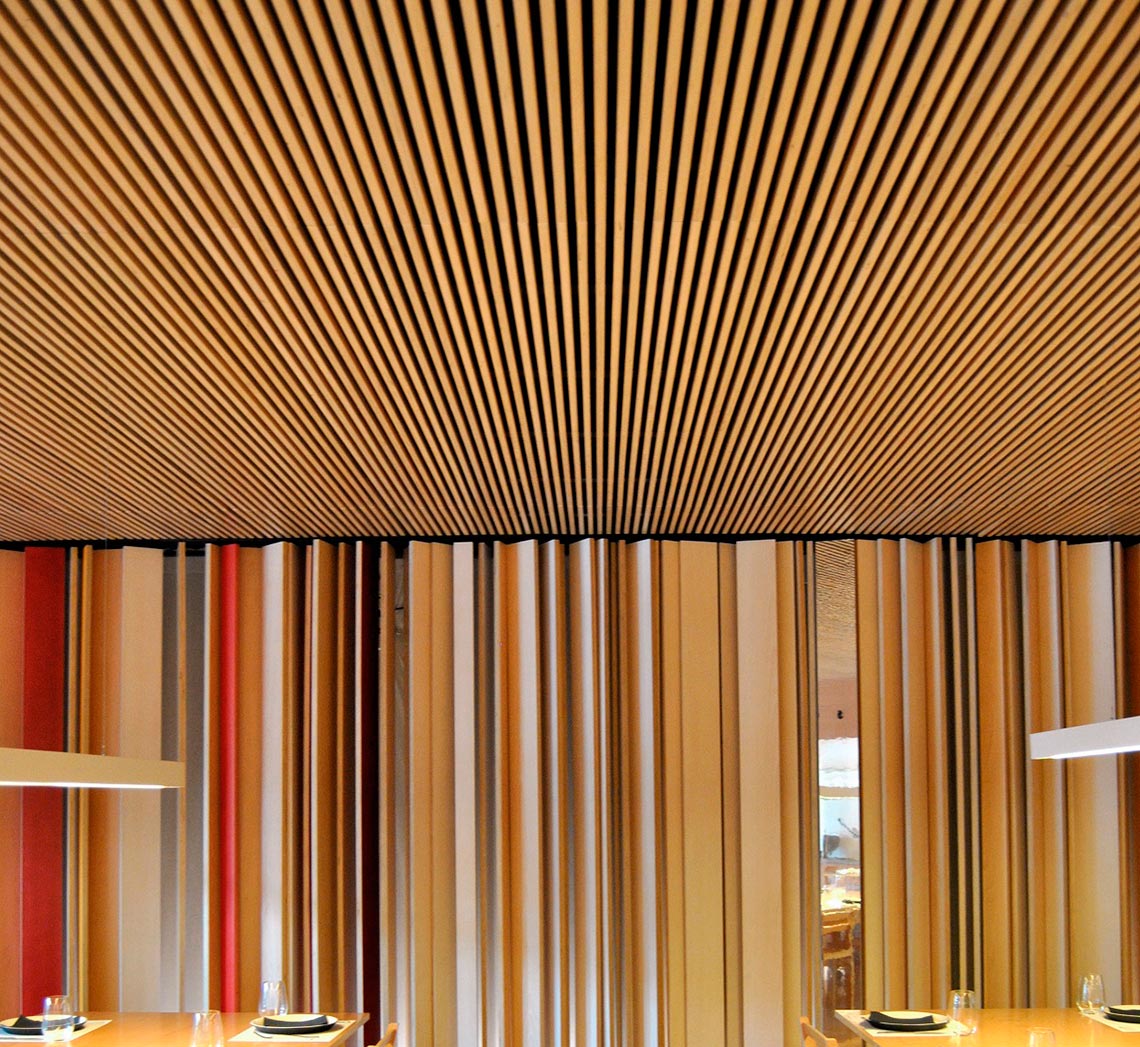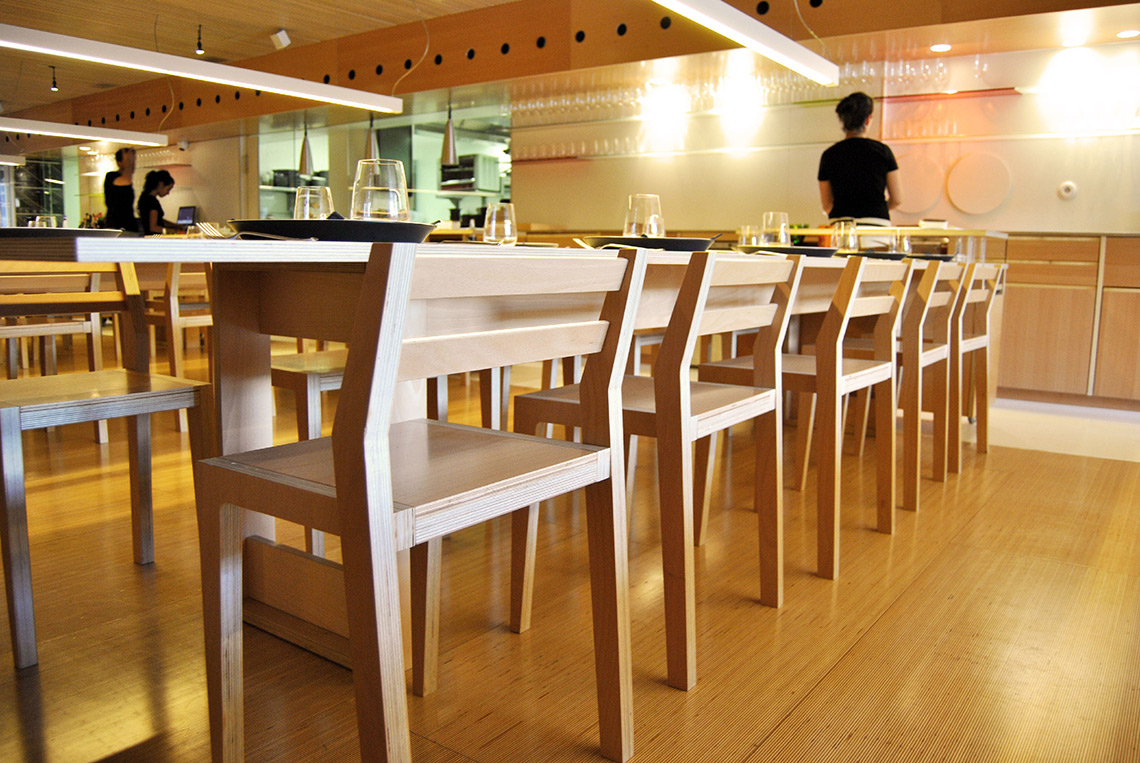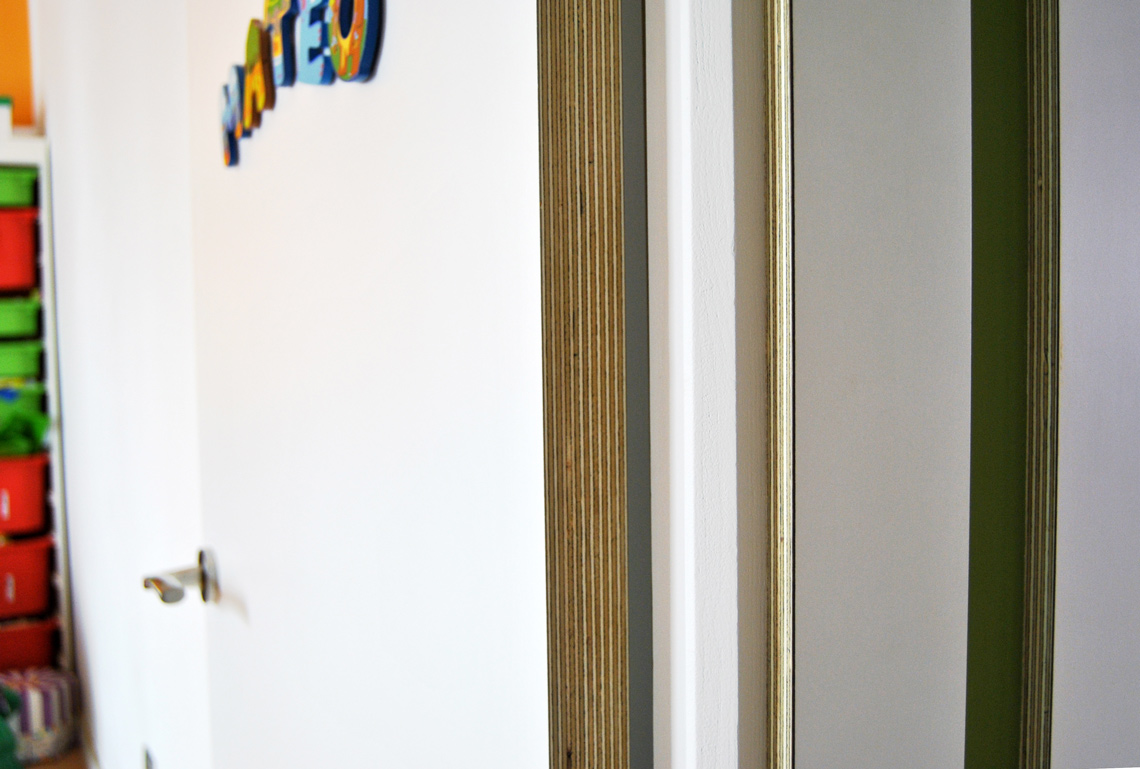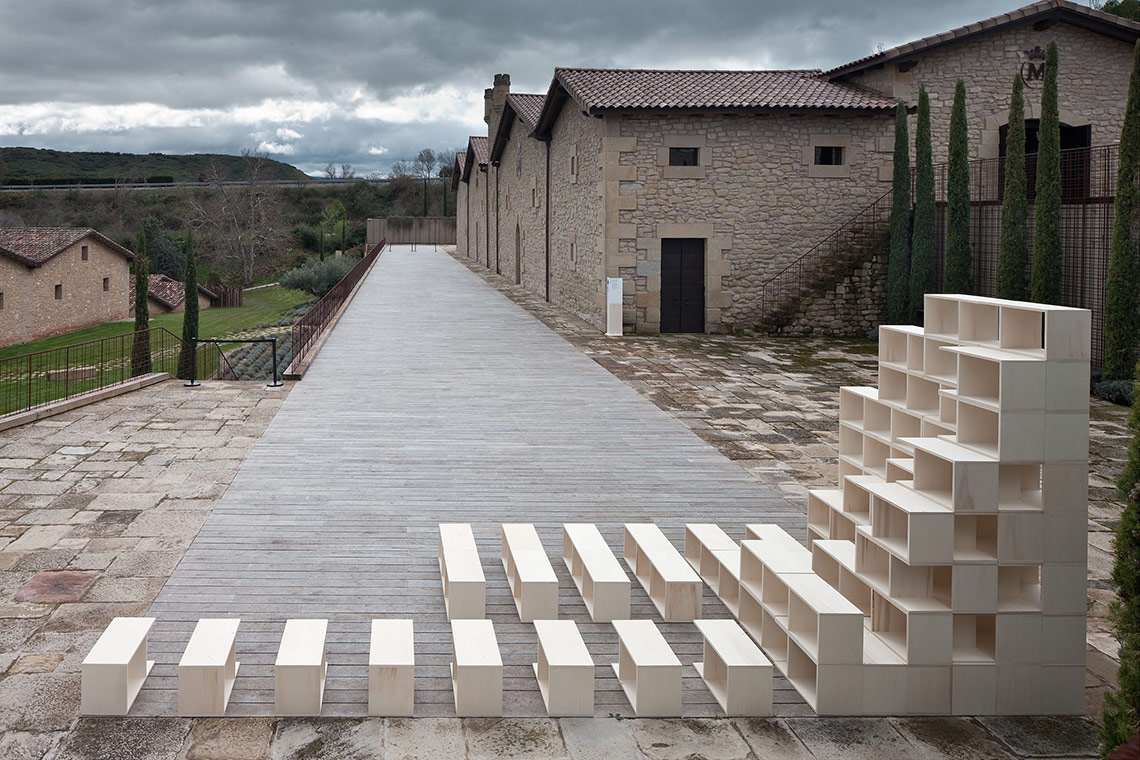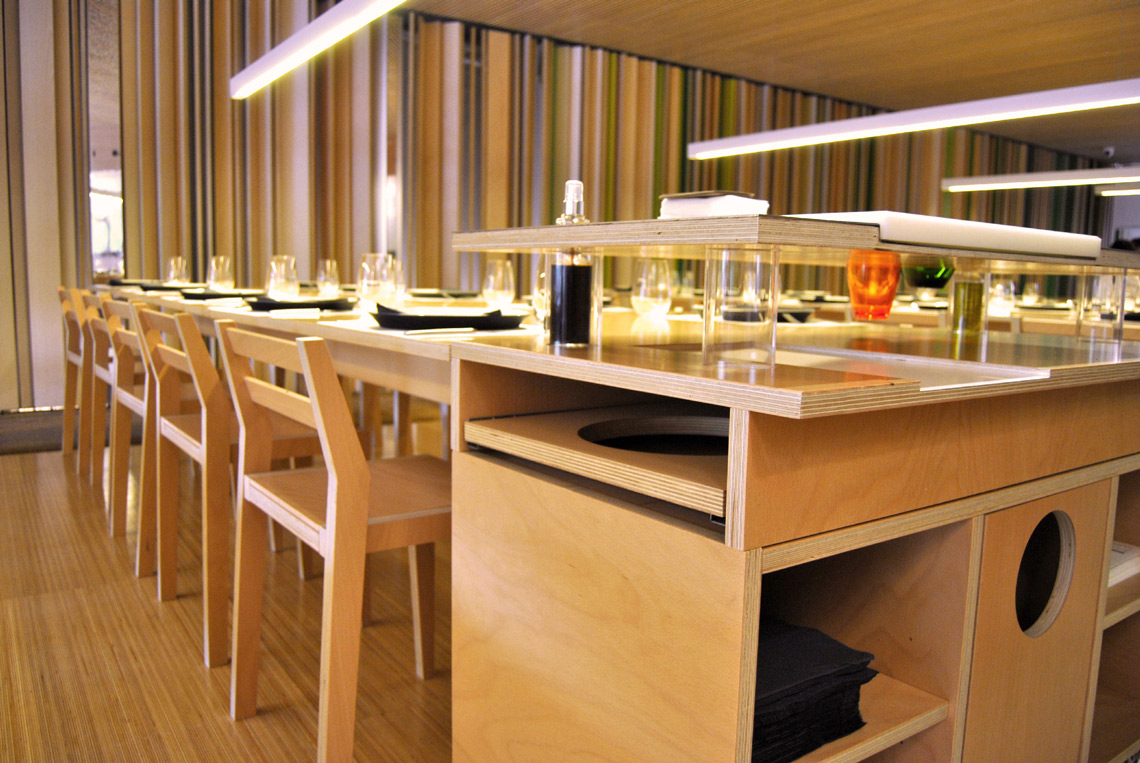Plywood is an engineered wood, it is a sheet material manufactured from thin layers or «plies» of wood veneer that are glued together with adjacent layers having their wood grain rotated up to 90 degrees to one another (sandwich) making it highly resistant due to the way the plies are layered.

Plywood
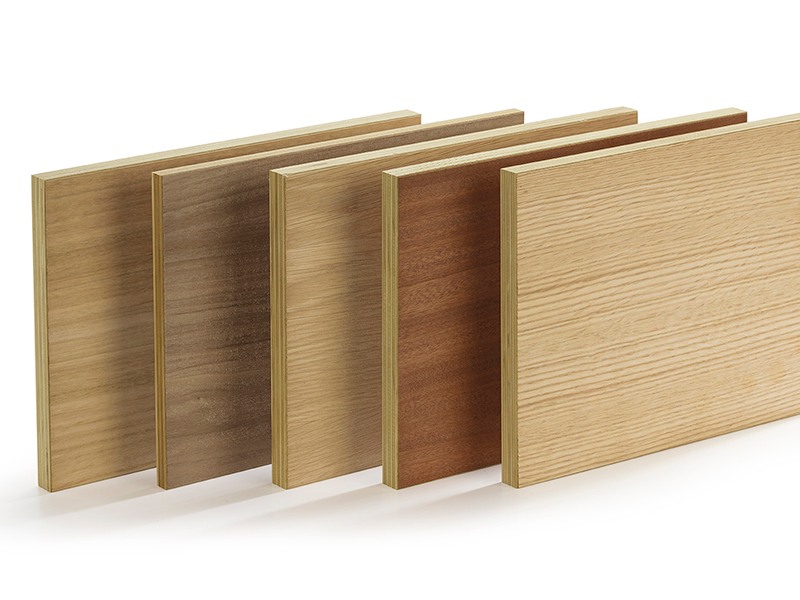
Description
Each layer of wood, or ply, is usually oriented with its grain running at right angles to the adjacent layer in order to reduce the shrinkage and improve the strength of the finished piece. Most plywood is pressed into large, flat sheets used in building construction. Other plywood pieces may be formed into simple or compound curves for use in furniture, boats, and aircraft.
All plywood bind resin and wood fiber sheets (cellulose cells are long, strong and thin) to form a composite material. This alternation of the grain is called cross-graining and has several important benefits: it reduces the tendency of wood to split when nailed at the edges; it reduces expansion and shrinkage, providing improved dimensional stability; and it makes the strength of the panel consistent across all directions. A typical plywood panel with wood veneer finish has face veneers of a higher grade than the core veneers.
COMPOSITION
Plywood panels may be made from hardwoods, softwoods, or a combination of the two.
The most commonly used wood species for plywood panels are:
- Poplar
- Ilomba
- Okoumé
- Eucalyptus
- Birch
AVAILABLE FINISHES
- Wood Veneer
- HPL Laminate
- Glossy acrilyc finish
Characteristics
APPLICATIONS
- Furniture: kitchens, wardrobes, tables, shelves, etc.
- Decoration: wall cladding, flooring etc.
- Construction: Structures, facades, hosuing, ceilings etc.
- Marine / caravans: Caravans, Yachts or other boats’ interiors and furnishing
PLYWOOD VS. MDF (Differences & Properties)
- Since it consists of layers of wood veneer with the grain on each layer running a different direction, Plywood is a very strong panel material.
- MDF is not as hard as plywood and can be damaged easily when roughly handled. It is not as stiff as plywood and can sag with if too much weight is applied to it.
- It is less susceptible to water damage than MDF, and won’t soak up water and swell as quickly or easily as MDF does.
- It is stainable, which makes it perfect for kitchen cabinets, table tops, and other projects where a large stained wood surface is needed.
- It holds screws very tightly since the varying grains of wood on each layer give the screws something to hold onto.
- The cross graining of plywood improves dimensional stability by reducing expansion and shrinkage. This makes a panels’ strength consistent in both directions. The odd number of sheets also reduces warping.
- Another advantage of plywood is that extreme cold does not affect its dimensions or strength.
CLASSIFICATION AND GRADING
There are two broad classes of plywood, each with its own grading system.
One class is known as hardwood and decorative. Plywoods in this class are used primarily for their appearance and are graded in descending order of resistance to moisture as Technical (Exterior), Type I (Exterior), Type II (Interior), and Type III (Interior). Their face veneers are virtually free of defects.
The other class of plywood is known as construction and industrial: Plywoods in this class are used primarily for their strength and are rated by their exposure capability and the grade of veneer used on the face and back. Exposure capability may be interior or exterior, depending on the type of glue. Veneer grades may be N, A, B, C, or D. N grade has very few surface defects, while D grade may have numerous knots and splits.
Technical Information
| Thickness (mm) | 3 – 40 | Finish | Poplar | |
| Okume | ||||
| Length x Width (mm) | 3050 x 1300 | Ilomba | ||
| 3100 x 1530 | Birch | |||
| 2440 x 1220 | Eucalyptus | |||
| 2500 x 1220 | HPL | |||
| Fromager | ||||
| Special Grades | Fire Resistant | Quality | Interior | |
| Lightweight | Exterior | |||
| Biologically durable | ||||
| High Density | ||||
| Flexible |




